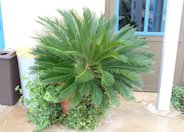
Common name:Sago-Palm
Botanical name:Cycas revoluta
Sago Palm resembles small palms; it is evergreen. It can slowly grow to 10'. It is used for a tropical effect and also looks great in planters. In the low desert, light shade and additional moisture are best. Side sprouts can form multi-trunked individuals. Apply fertilizer at leaf expansion. This plant has few pests.
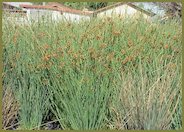
Common name:Quartz Creek Rush
Botanical name:Juncus effusus pac. 'Quartz Creek'
This selection of Juncus is widely used in landscapes due to its carefree nature, rigid upright structure and bright green color. This Juncus initially grows very rapidily and then slows to eventually to 36" wide and then clumps. It will reach a height of 24"-36". It reguires fairly regular water in the warmer months to perform well.
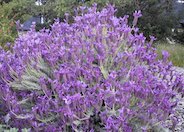
Common name:Spanish Lavender
Botanical name:Lavandula stoechas
This dense shrub grows 2'-3' tall with blue gray foliage and deep purple flowers that have large showy bracts near the top of the spikes. It is drought tolerant . - Cornflower Farms
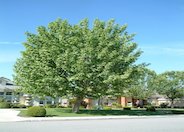
Common name:California Sycamore
Botanical name:Platanus racemosa
The California Sycamore is a fast growing deciduous tree that reaches up to 40'-50' high. It tolerates heat, smog, as well as moist conditions; it is native to riparian areas. It can be drought tolerant once it's established if there is a high water table. It has interesting mottled bark when the tree is bare in winter. Leaves in fall are gold, red and orange, creating litter. It is beautiful all year round.
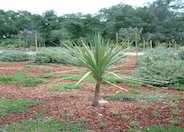
Common name:Australian-Dracaena
Botanical name:Cordyline australis
Cordyline australis is an evergreen shrub that grows 12' to 30' tall and 10' to 15' wide with sword-like leaves. It likes full sun, and is very tolerant of heat and drought. It will live in any type of soil that is well drained. Cut back to develop multiple trunks.
| Designer: Sunset Staff | LA Arboretum Sunset Section 5 |
Photographer: GardenSoft |
Soils and Compost:
Incorporate compost 6" into your soil to retain water, reduce compaction, feed earthworms, and provide valuable nutrients to your plants.
Water Saving Tip:
Integrated Pest Management:
Develop healthy soil for plants that are vigorous and naturally pest-resistant.
